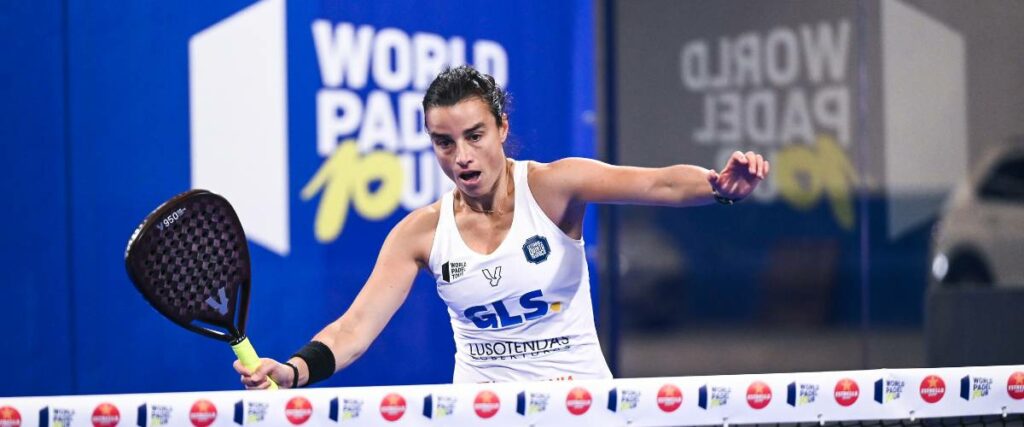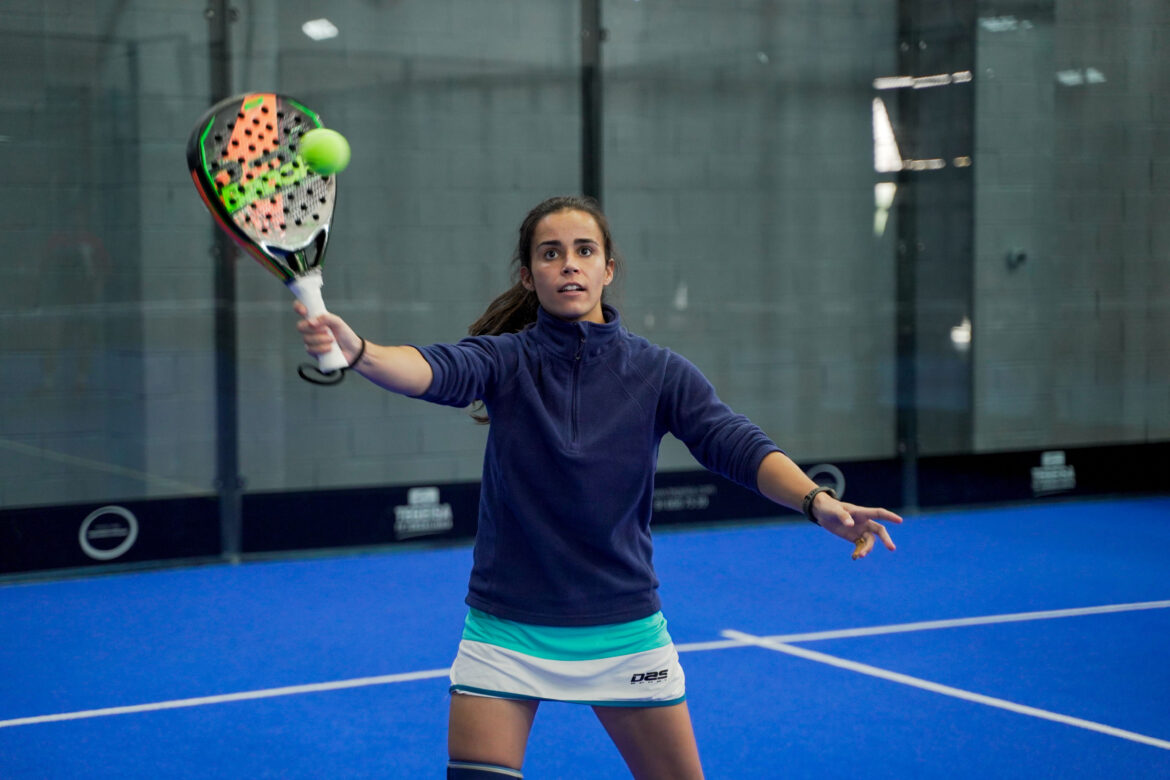The volley is one of the most decisive strokes in padel. Mastering your technique and knowing when to choose an aggressive or control volley can make a big difference in the outcome of a match. In this article, we will explore how to perfect the volley from a technical and tactical point of view, so you can get the most out of this key stroke.
What makes the volley so important in padel?
The volley is essential because it allows you to take control of the net, one of the most offensive positions in the game. By mastering the volley, you can force your opponents to play defensively, leaving them no time to think and forcing them to make mistakes. In addition, a good volley gives you the ability to change the pace of the game, alternating between speed and control, which can throw your opponents off balance in the game.
When you play an effective volley, whether aggressive or control, you have the opportunity to finish off games. In addition, you secure those decisive points that bring you closer to victory. Therefore, mastering the volley is not only an advantage, but it can be what sets you apart in competitive matches. Having control of the net allows you to establish your style of game, put pressure on your opponents and make decisions that lead you to win the points in your favor. All in all, a well-executed volley not only controls the pace of the match, but also puts you in a dominant position and gives you the power to define the game.
Volley technique: essential basics
For your volley to be effective, you need to focus on some fundamental aspects of technique that will help you have a more controlled and accurate stroke.
For your volley to be effective, you need to focus on some fundamental aspects of technique that will help you have a more controlled and accurate stroke.
Body position: It is key to maintain a stable base. Feet should be shoulder width apart and knees slightly bent. Weight should be on the balls of the feet to facilitate quick movements. Having the racket ready at chest height, ready to react, will allow you to be in a better position to respond with agility. Correct posture is essential to maintain balance and stability during the game. This translates into a better ability to react to your opponent’s unexpected strokes.
Stroke execution: Hit the ball in front of your body, making sure the impact is short and controlled. Avoid wide movements that reduce control over the ball. Accompany the stroke with a smooth motion in the desired direction. For control volleys, use a slight slice that slows the ball down, while for aggressive volleys you should aim for a flatter, more powerful stroke. The key is to find the balance between power and accuracy, so that each stroke has a clear purpose and is difficult for the opponent to return.

Deciding between aggressive volley and control volley
In padel, the decision between an aggressive and a control volley will depend on the specific situation of the match and your position on the court.
Aggressive volley: This volley is used when you have a dominant position near the net. It is ideal if the ball you receive is high or without much speed, which gives you the necessary time to attack. The aggressive volley aims to finish off the point, looking for corners or difficult angles that put your opponents in trouble. For example, if you notice that your opponent tends to move slowly to his left side, you could direct the aggressive volley to that specific area, showing that you are one step ahead by anticipating his weakness. The key is to hit with power, but always control the direction so that the stroke is accurate. Direct the ball towards the opponent’s feet or side walls to make the return more difficult. This strategy not only seeks to close the point quickly, but also to force opponents to make mistakes under pressure.
Control volley: This option is best when the ball comes fast or with a lot of spin, and you don’t have time for an aggressive stroke. It is also useful if you are in an awkward or unbalanced position. The goal of the control volley is to maintain control of the point, forcing opponents to return difficult balls with no opportunity to attack. It uses a softer, more accurate stroke, seeking depth in the opponent’s court and directing the ball into the corners to maintain pressure. The control volley is ideal for preparing the next stroke, gaining time and wearing down the opponent while maintaining a favorable position on the court.
Strategic positioning: Where to direct your volleys
Knowing where to hit your volleys is as important as the technique itself. Strategic positioning can define the success of your volleys and put you in an advantageous position.
Towards the opponent’s feet: Directing the ball towards your opponent’s feet makes it difficult to defend and limits your opponent’s ability to attack. This is an effective target for both aggressive and control volleys, as it forces the opponent to hit from a difficult position. When the opponent has to hit from below, he loses control and is more likely to make mistakes, which you can take advantage of to take control of the point.
To the side walls: Sending the ball to the side walls makes the opponent have to execute an awkward stroke. This is ideal if you want to close the point with an aggressive volley, as the return becomes much more complicated for the opponent. The side walls add an extra element of difficulty, making the ball bounce unexpectedly and forcing opponents to react quickly.
To the double back wall: Using the double back wall is perfect for keeping pressure on the opponent. This is particularly effective on control volleys, as it forces the opponent to move and makes it difficult for him to set up a good attacking stroke. In addition, by sending the ball to the double wall, you force the opponent to run more, exhausting his energy and increasing the chances of errors.
Tactical aspects to consider in the volley
There are several tactical aspects to consider when deciding how to execute a volley.
Court Positioning: If you are close to the net, look to be more aggressive in attacking and closing out the point. In an intermediate position, it is better to opt for control volleys that allow you to gain time and move towards the net without losing control of the point. Knowing how to adjust your position is essential to maintain control of the game and avoid being left in a vulnerable position.
Features of your opponents: If your opponents have a good defense, you will need to use aggressive volleys directed at the walls to complicate their stroke. If they have little mobility, take advantage of those weaknesses and use the areas that are far from their reach. Adapting your strategy to your opponent’s features is key to maximize your chances and always stay one step ahead.
The moment of the match: The decision between an aggressive or control volley also depends on the moment of the match. On key points, prioritize safety with a control volley. If you have an advantage on the score, you can take more risks and look to close out points with aggressive volleys. Understanding when to risk and when to play it safe can make the difference between winning or losing a tight match.
Common volleying mistakes (and how to avoid them)
One of the most common mistakes is trying to seek power with wide and uncontrolled movements. This often leads to a loss of accuracy and ineffective strokes. To avoid this, keep your stroke short and focused, making sure you always have control over the ball. In addition, it is important to adjust for court position. Playing too close to the net or too far back can limit your effectiveness; you should know how to adjust your position according to the game to maximize your range and effectiveness.
Another common mistake is the lack of anticipation. Many players react late to fast balls. Keep your racquet high and your feet active, always ready for a quick reaction to allow you to volley effectively. Anticipation is key to stay one step ahead and have the time needed to execute an effective volley.
Practical exercises to perfect your volley
Intentional practice is essential to improve your volley. Here are some drills to help you perfect it.
Volley Rally: Practice continuous volleys with a partner, alternating between control and aggression. This will help you develop a good balance between both volleying styles, improving your ability to decide which one to use in each situation of the match.
Targeted shots: Place cones in the corners and along the opponent’s court. Practice directing your volleys to these specific points to improve accuracy and strategic placement of your strokes. This exercise will allow you to have more control over the direction of the ball and increase the difficulty for your opponents.
Training under pressure: Simulate match situations where you receive fastballs and must decide on the spot whether to attack or control. This will help you make quick and appropriate decisions depending on the situation. Practicing under pressure will improve your responsiveness and confidence in critical moments of the match.
Work in pairs: Practice cross-court volleys with your partner, focusing on maintaining position and rhythm. Coordination with your partner is also essential to maintain dominance at the net and avoid leaving gaps for your opponent to take advantage of. Good communication and synchronization help to create a solid team game strategy, where both players can cover the court efficiently. Maintaining good communication and working together will give you a significant advantage in the match.
Conclusion
The volley is much more than just a stroke; it is a strategic tool that allows you to dominate the court and define the pace of the match. Mastering both technique and tactics will give you the ability to decide when to attack aggressively and when to maintain control in preparation for the next stroke.
Remember that practicing and analyzing each match situation are the keys to developing an effective and adaptable volley. Over time, you will see your confidence and effectiveness at the net improve, bringing you to a more competitive level of game. It’s not just about executing a volley, but knowing when and how to use it to maximize its impact. Are you ready to take your volley to the next level? Test yourself on the court and discover the true impact this stroke can have on your game. With perseverance and practice, you will become a more complete player and master the art of the volley, making it one of your greatest match-winning weapons.
Improve your volley and other key padel strokes with our Padel Player course, the most complete training for players in a 100% online format, for only 99€!
Access here: https://www.padelmba.com/en/online-programs/online-course-padel-players/


